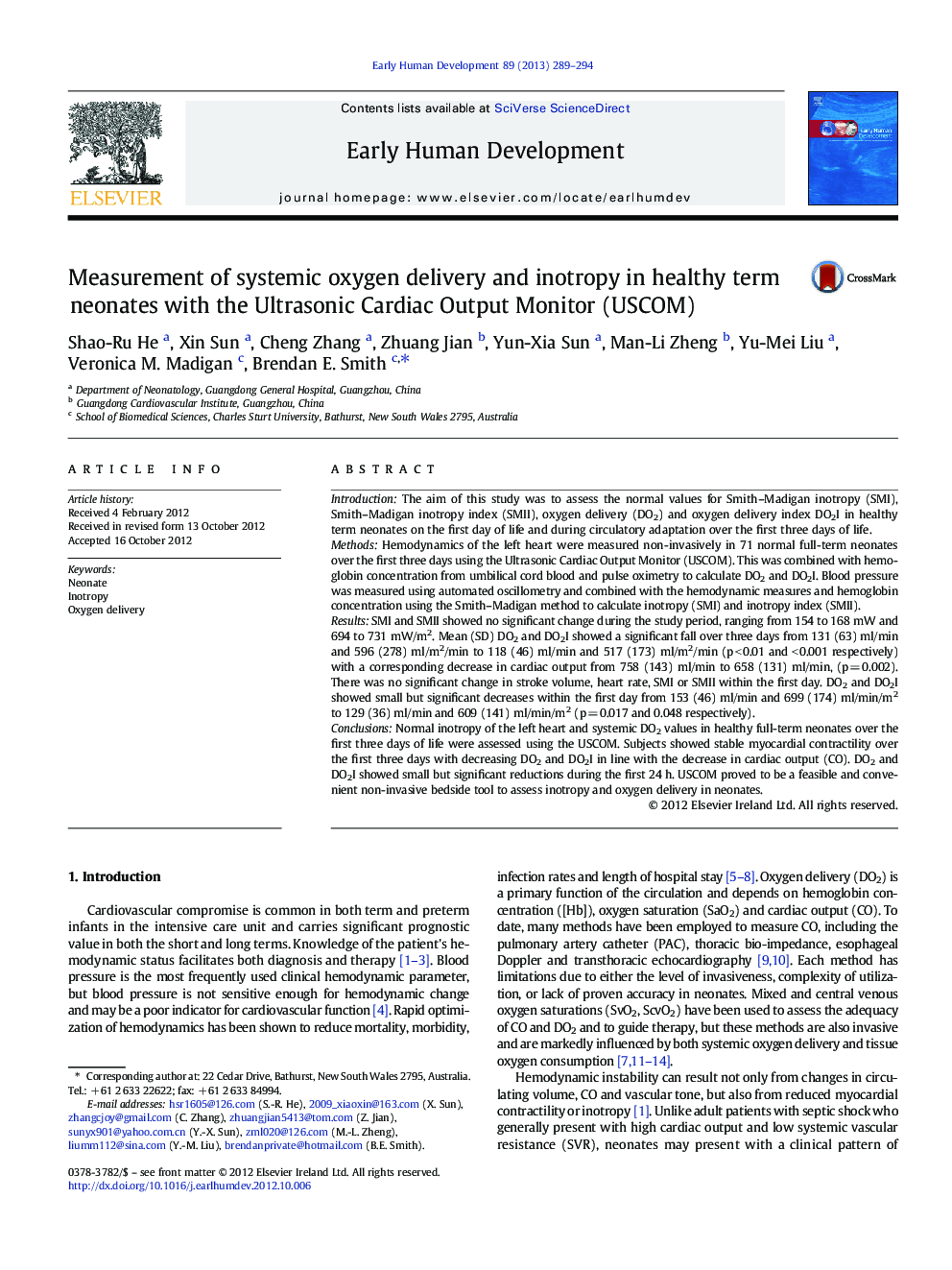| Article ID | Journal | Published Year | Pages | File Type |
|---|---|---|---|---|
| 6172002 | Early Human Development | 2013 | 6 Pages |
IntroductionThe aim of this study was to assess the normal values for Smith-Madigan inotropy (SMI), Smith-Madigan inotropy index (SMII), oxygen delivery (DO2) and oxygen delivery index DO2I in healthy term neonates on the first day of life and during circulatory adaptation over the first three days of life.MethodsHemodynamics of the left heart were measured non-invasively in 71 normal full-term neonates over the first three days using the Ultrasonic Cardiac Output Monitor (USCOM). This was combined with hemoglobin concentration from umbilical cord blood and pulse oximetry to calculate DO2 and DO2I. Blood pressure was measured using automated oscillometry and combined with the hemodynamic measures and hemoglobin concentration using the Smith-Madigan method to calculate inotropy (SMI) and inotropy index (SMII).ResultsSMI and SMII showed no significant change during the study period, ranging from 154 to 168 mW and 694 to 731 mW/m2. Mean (SD) DO2 and DO2I showed a significant fall over three days from 131 (63) ml/min and 596 (278) ml/m2/min to 118 (46) ml/min and 517 (173) ml/m2/min (p < 0.01 and < 0.001 respectively) with a corresponding decrease in cardiac output from 758 (143) ml/min to 658 (131) ml/min, (p = 0.002). There was no significant change in stroke volume, heart rate, SMI or SMII within the first day. DO2 and DO2I showed small but significant decreases within the first day from 153 (46) ml/min and 699 (174) ml/min/m2 to 129 (36) ml/min and 609 (141) ml/min/m2 (p = 0.017 and 0.048 respectively).ConclusionsNormal inotropy of the left heart and systemic DO2 values in healthy full-term neonates over the first three days of life were assessed using the USCOM. Subjects showed stable myocardial contractility over the first three days with decreasing DO2 and DO2I in line with the decrease in cardiac output (CO). DO2 and DO2I showed small but significant reductions during the first 24 h. USCOM proved to be a feasible and convenient non-invasive bedside tool to assess inotropy and oxygen delivery in neonates.
